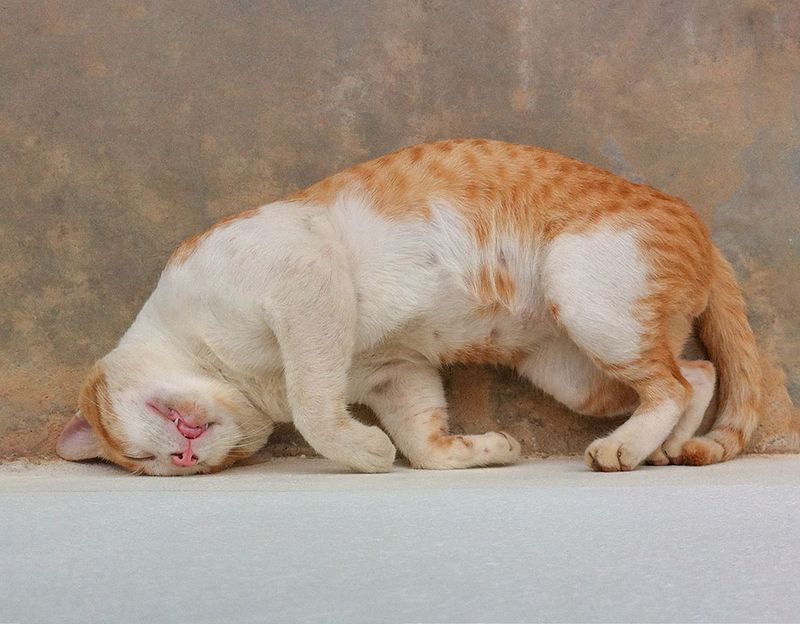📖 Table of Content:
Deciding when to say goodbye to a beloved cat is one of the most challenging decisions a pet owner can face. Recognizing the signs that a cat may be nearing the end of its life can help in making compassionate and informed choices. Here are 10 signs to help understand when it may be time to consider euthanasia for your feline friend.
1. Loss of Appetite
A significant change in appetite, especially a refusal to eat, often signals a decline in a cat’s health. This could indicate a variety of underlying conditions, such as organ failure or severe illness. When a cat stops eating, it may be due to pain, discomfort, or a loss of interest in life.
It’s crucial to monitor your cat’s eating habits closely and consult with a veterinarian to understand the root cause. In some cases, appetite stimulants or special diets might provide temporary relief, but a persistent lack of appetite is often a serious sign.
2. Chronic Pain
Pain that doesn’t seem to subside, such as difficulty moving or obvious discomfort, is a major indicator of a cat’s declining health. Cats are masters at hiding pain, so visible signs often mean the situation is severe.
Observe if your cat is limping, having trouble jumping, or showing signs of irritability. Pain management therapies may help, but if relief isn’t found, it might be kinder to consider euthanasia, as chronic pain drastically affects a cat’s quality of life.
3. Severe Weight Loss
Rapid or extreme weight loss is a red flag, often associated with terminal conditions like cancer or chronic kidney disease. This can occur even if the cat is eating regularly, indicating that the body isn’t processing nutrients properly.
Weight loss affects energy levels and overall well-being. Veterinary intervention can sometimes identify treatable issues, but when weight loss is severe and untreatable, it may be time to discuss humane options with your vet.
4. Breathing Difficulties
Labored breathing or persistent coughing in cats can indicate serious health problems, such as heart or lung disease. Observing your cat struggling to breathe or panting can be distressing, and these symptoms shouldn’t be ignored.
Immediate veterinary attention is necessary to diagnose the cause. Treatments like oxygen therapy or medication can provide relief, but if breathing difficulties persist, assessing your cat’s quality of life is crucial.
5. Incontinence
Incontinence, or the inability to control urination and defecation, can be a sign of severe health decline in cats. It often results from neurological issues or advanced age-related conditions like arthritis.
This can lead to hygiene problems and discomfort for both the cat and its owner. While medications and changes to the living environment might help, ongoing incontinence is a significant quality of life issue that might necessitate difficult decisions.
6. Withdrawal from Family
Cats that begin to hide or withdraw from their family members may be indicating they’re not feeling well. This behavior change is often a sign of distress, pain, or anxiety.
While it’s normal for cats to seek solitude occasionally, a consistent pattern of withdrawal might mean they’re preparing themselves for the end. Consult with a vet to explore any underlying health issues and decide on the best course of action.
7. Unkempt Appearance
Cats are generally meticulous groomers, so a lack of grooming leading to a dirty, matted coat can indicate illness. This neglect often signals severe discomfort or lack of energy.
An unkempt appearance can be due to arthritis, pain, or cognitive decline. Regular grooming can help maintain comfort, but if your cat’s condition doesn’t improve, it’s a sign that their quality of life is compromised.
8. Disorientation
Disorientation or confusion, such as wandering aimlessly or staring off into space, can indicate cognitive dysfunction or neurological issues. This is more common in senior cats and can be distressing to observe.
If your cat seems lost in familiar environments or doesn’t respond to its name, it’s crucial to seek veterinary guidance. While some treatments can alleviate symptoms, persistent disorientation often affects a cat’s happiness and safety.
9. Seizures
Seizures in cats can be caused by various serious conditions, such as epilepsy, brain tumors, or metabolic disorders. Witnessing a seizure can be frightening for any pet owner.
While some seizures can be managed with medication, frequent or severe episodes may suggest a poor prognosis. Discussing your cat’s condition with a vet can help determine if euthanasia is the most compassionate option.
10. Persistent Vomiting or Diarrhea
Chronic vomiting or diarrhea can lead to dehydration, weakness, and further health complications in cats. These symptoms may result from gastrointestinal issues, infections, or organ failure.
While some causes are treatable, persistent cases often signal a decline in overall health. A thorough veterinary examination is essential to determine the cause and potential treatments. If symptoms do not improve, quality of life should be a primary consideration.










